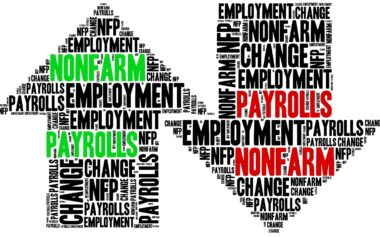The Impact of Global Trade Tensions on the Australian Dollar in 2025

The Australian dollar (AUD) is a key player in the global forex market. Its value is closely tied to international trade dynamics.
As we approach 2025, rising trade tensions between major powers like the U.S., China, and the European Union will likely cause currency value fluctuations.
For Forex traders in Australia, understanding these geopolitical and economic shifts is vital for making informed trading decisions.
This analysis delves into the link between global trade policies and the AUD. It offers insights for traders aiming to trade AUD/USD in 2025 and beyond.
We’ll look at the factors influencing the Australian dollar’s value, key trade agreements and conflicts, and strategies for managing risk in an unpredictable market.
Why the Australian Dollar is Sensitive to Trade Tensions
Australia’s economy heavily relies on exports, mainly in mining, agriculture, and natural gas. Global trade disputes can affect demand for these exports, impacting the AUD’s strength.
China is a major player in Australia’s trade, being the largest buyer of Australian commodities.
A slowdown in Chinese demand, due to economic downturns or trade measures, can weaken the AUD.
U.S. trade policies, including tariffs and sanctions, also influence Australia’s export market.
For instance, new U.S. tariffs on Chinese goods could lead to reduced Chinese imports of Australian raw materials, weakening the AUD.
Commodity prices are critical. As a commodity-linked currency, falling prices for exports like iron ore or LNG can depress the AUD.
Forex traders in Australia need to monitor these macroeconomic trends to predict market movements.
Major Trade Policies Affecting the AUD in 2025
The ongoing U.S.-China trade relationship significantly impacts the AUD.
Trade wars between these superpowers have led to tariffs, export restrictions, and supply chain disruptions.
Escalating tensions in 2025 could see China reduce its purchases of Australian minerals and energy, pressuring the AUD down.
Traders should watch U.S. trade announcements and China’s responses to anticipate market reactions.
Australia’s trade agreements also shape the AUD’s performance.
Deals with Japan, South Korea, and the UK are in place, but negotiations with the European Union are slow.
A long-awaited EU-Australia FTA in 2025 could boost the AUD by opening new markets.
On the other hand, geopolitical tensions could lead to the breakdown of agreements, affecting the currency.
Trade sanctions are another risk. Australia’s alignment with U.S. foreign policy has strained its relationship with China, leading to export restrictions.
New sanctions in 2025 could cause volatility in the AUD/USD pair.
How Trade Tensions Affect the AUD/USD Exchange Rate
The AUD/USD pair is highly sensitive to global trade sentiment shifts.
Rising geopolitical risks often lead investors to seek safer assets, like the U.S. dollar, causing the AUD to depreciate.
This “risk-off” sentiment can intensify if trade conflicts harm Australia’s export-driven economy.
Commodity demand is a major driver. China’s significant role in Australia’s export revenue means any decline in Chinese industrial activity can reduce demand for key resources, weakening the AUD.
If the Reserve Bank of Australia (RBA) cuts interest rates in response to economic uncertainty, the AUD could lose value against the USD.
For example, new U.S. tariffs on steel imports in mid-2025 could sharply decline the AUD/USD pair.
It might drop from 0.68 to 0.65 within weeks. Forex traders in Australia must stay alert to such developments to adjust their strategies.
Forex Trading Strategies for Managing Trade-Related Risks in 2025-2026
Successfully navigating the forex market amid trade tensions requires a combination of economic awareness, technical analysis, and disciplined risk management.
Keeping abreast of economic news is essential.
Traders should monitor monthly reports on China’s import and export data, as well as statements from the U.S. Trade Representative regarding new tariffs or sanctions.
The RBA’s monetary policy updates are equally important, as interest rate decisions can significantly influence the AUD’s trajectory.
Technical analysis tools can help identify key trends and entry points.
Support and resistance levels are critical for determining where the AUD/USD pair might reverse or continue its trend.
Moving averages, such as the 50-day and 200-day indicators, can provide insight into long-term momentum, while the Relative Strength Index (RSI) helps traders spot overbought or oversold conditions before a correction.
Risk mitigation strategies are critical in a volatile market.
Diversifying trades beyond just AUD/USD—such as exploring AUD/JPY or AUD/NZD—can reduce exposure to a single currency pair. Implementing stop-loss orders ensures that unexpected market swings do not lead to excessive losses.
During periods of heightened uncertainty, traders may consider shifting some capital into safe-haven assets like gold (XAU) or the Japanese yen (JPY) as a hedge against AUD depreciation.
Long-Term Outlook for the AUD in 2025 and Beyond
The Australian dollar’s performance over the next two years will largely depend on the resolution—or escalation—of global trade disputes.
In an optimistic scenario where China’s economy rebounds and new trade agreements are finalized, the AUD could experience sustained growth.
A weakening U.S. dollar, possibly due to Federal Reserve rate cuts, might further bolster the AUD/USD exchange rate.
Conversely, a deterioration in U.S.-China relations or a global economic slowdown could weigh heavily on the AUD.
If commodity prices plummet due to reduced industrial demand, or if Australia faces renewed trade sanctions, the currency may struggle to regain strength.
Traders who trade AUD/USD in 2025 must remain flexible, adapting their strategies as new developments unfold.
Final Recommendations for Forex Traders in Australia
Staying informed is the foundation of successful forex trading.
Regularly following updates from financial news outlets, government trade reports, and central bank announcements will provide valuable insights into market trends.
Risk management should never be overlooked.
Even the most promising trades can turn unfavorable, so setting strict stop-loss levels and avoiding over-leveraging are essential practices.
Diversifying trading portfolios across different currency pairs and asset classes can further safeguard against unexpected downturns.
Lastly, traders should consider practicing their strategies in a demo account before committing real capital. This allows for testing different approaches in real-market conditions without financial risk.
Key Takeaways for Trading the AUD in 2025
The Australian dollar remains highly reactive to global trade tensions, particular those involving China and the U.S. Traders who trade Forex in Australia must closely monitor commodity prices, geopolitical developments, and central bank policies to anticipate market movements.
For those looking to trade AUD/USD in 2025, employing a mix of fundamental and technical analysis, along with disciplined risk management, will be critical for navigating volatility.
By staying informed and adaptable, traders can position themselves to capitalize on opportunities while minimizing risks in an ever-changing market landscape.
With the right strategies and awareness, forex traders in Australia can successfully manage the challenges and opportunities that lie ahead in 2025 and beyond. Happy trading! 🚀
More Information
For more trading term general definitions, visit our A to Z of Forex Trading
To look at these concepts in action, please visit our sister site, Latest Forex Rates
What to do Next
If you have more questions or need further guidance, don’t hesitate to reach out to us at The Trading Coach International for personalised coaching and support.
If you would like to learn more about trading forex profitably and what steps you can take next to get on the right track to build your Lifestyle Income From Trading, you can book an no obligation, Free Strategy Call with our Lead Trading Coach by clicking on THIS LINK
Disclaimer
The information, strategies, techniques and approaches discussed in this article are for general information purposes only. The Trading Coach International does not necessarily use, promote nor recommend any strategies discussed in this article. The information in this article may not be suitable for your personal financial circumstances and you should seek independent qualified financial advice before implementing any financial strategy. The Trading Coach International is not a financial advisor and does not have AFS registration.


















